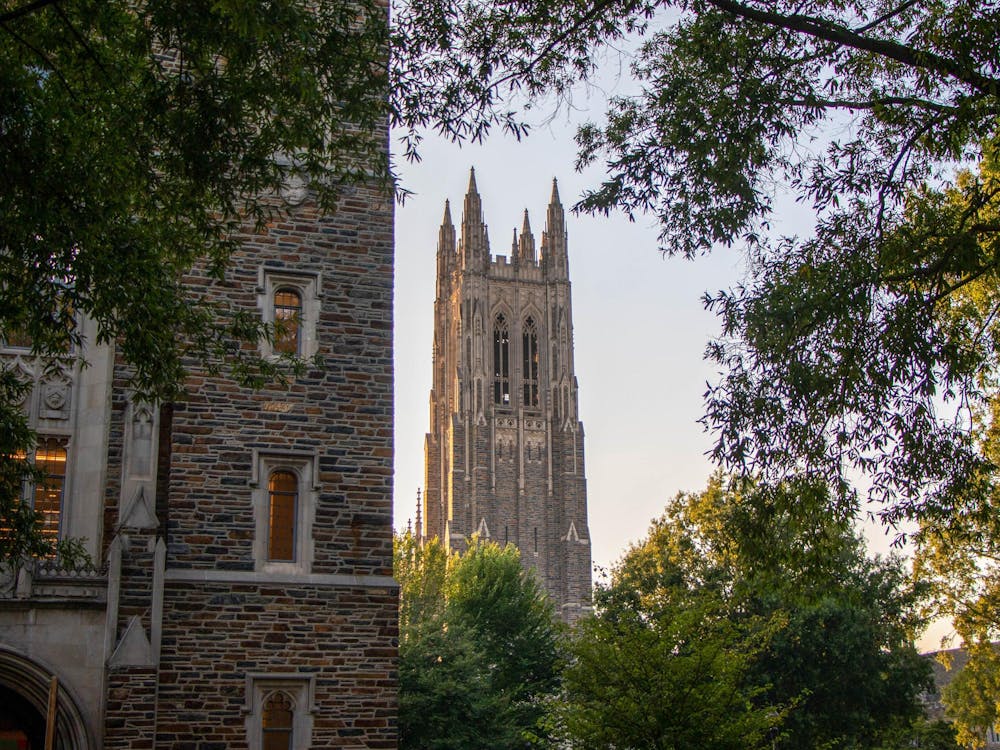Following a Sept. 7 article in the New York Times Magazine that described Duke as falling substantially behind peer universities in socioeconomic diversity, several students resoundingly agreed with the article's findings but remained uncertain on whether it will push the University to increase socioeconomic diversity in future student bodies.
The article, which described Duke as the “exception to the exception” among top-ranked universities, cited a July research study published by Opportunity Insights, a nonprofit organization run by Harvard economist Raj Chetty, which stated that only 12% of Duke students in “recent years” were Pell Grant eligible.
President Vincent Price wrote in a message responding to the article that 17% of the Class of 2027 is Pell Grant-eligible, and that the University remains “firmly committed to building on our recent recruitment efforts.”
However, sophomore Caroline Joo said that although Duke promotes racial and ethnic diversity, she has yet to meet many students who are on financial aid. Even among students she knows who are on financial aid, Joo does not believe that she has met anyone in the bottom 50th percentile of household income.
“I definitely agree with the sentiment that wealth is ubiquitous on Duke’s campus,” sophomore Carly Pyles said. “As a student and child of a faculty member at a private high school in Brooklyn, I thought I had already been exposed to the highest levels of affluence. In my opinion, Duke is at a whole new level.”
Beyond the numbers, some students believe the socioeconomic divide is most evident in the social scene.
For junior Anjali Kapadia, socioeconomic disparities on campus are most apparent across dominant extracurricular activities, including Greek life, club sports and other selective groups where students are required to pay dues to participate. These barriers to entry, she said, emphasize the lack of accessibility on campus for low-income students.
Junior Victoria Ely, a first-generation student, pointed out a dilemma many first-generation students at Duke feel upon joining the campus community.
“You want to be involved, and you want to feel like a normal Duke student, but there are just so many obstacles to doing so,” she said. “Yes, I got in. But what happens after?”
In navigating her time at Duke, Ely said that the Duke Low-Income First-Generation Engagement office has helped positively shape her experience. Older Duke LIFE students gave Ely and other incoming Duke LIFE students tips on how to navigate Duke’s expensive social life, which they would have otherwise not known.
Kapadia and Joo said, aside from Duke LIFE, they are unaware of the resources available for low-income students at Duke.
“Even just the very small things that happen, I just feel that, not necessarily personal attacks to low-income students, but you’re really just trying to make it so much harder,” Ely said. She added that the replacement of Panda Express, which students viewed as one of the few affordable on-campus dining options, further limits food choices for low-income students.
Despite a desire to see change, Kapadia and Joo emphasized the concept of Duke as a “business” that seeks to maximize its profits. They are unsure of whether the administration is both willing and able to truly increase socioeconomic diversity.
“One thing the Times article said is how if [Duke] increased to 25% of Pell Grant recipients, [Duke] would end up losing around $10 million per year in tuition money,” Kapadia said.
Despite optimism from University administration, Kapadia said she is not surprised that progress continues to be stagnant. Students must make persistent efforts to ensure that the administration actually keeps their word, she added.
Ely noted that after the release of the New York Times Magazine’s article, she felt like the focus shifted to the “optics of admitting more lower-class students.” However, she notes that there “also has to be a focus on what you do [to help] those students.”
“We are at the worst of the elite, but in [the] aggregate, everyone needs to be better … I think what Duke could take this as is a chance to be the best,” Kapadia said. “I think we will all look back as a university and be like, ‘Wow, we should be proud that we took this step that was needed long ago, but at least we were the ones to be at the forefront of change.’”
Holly Keegan and Audrey Patterson contributed reporting.
Get The Chronicle straight to your inbox
Signup for our weekly newsletter. Cancel at any time.

Abby Spiller is a Trinity junior and editor-in-chief of The Chronicle's 120th volume.

